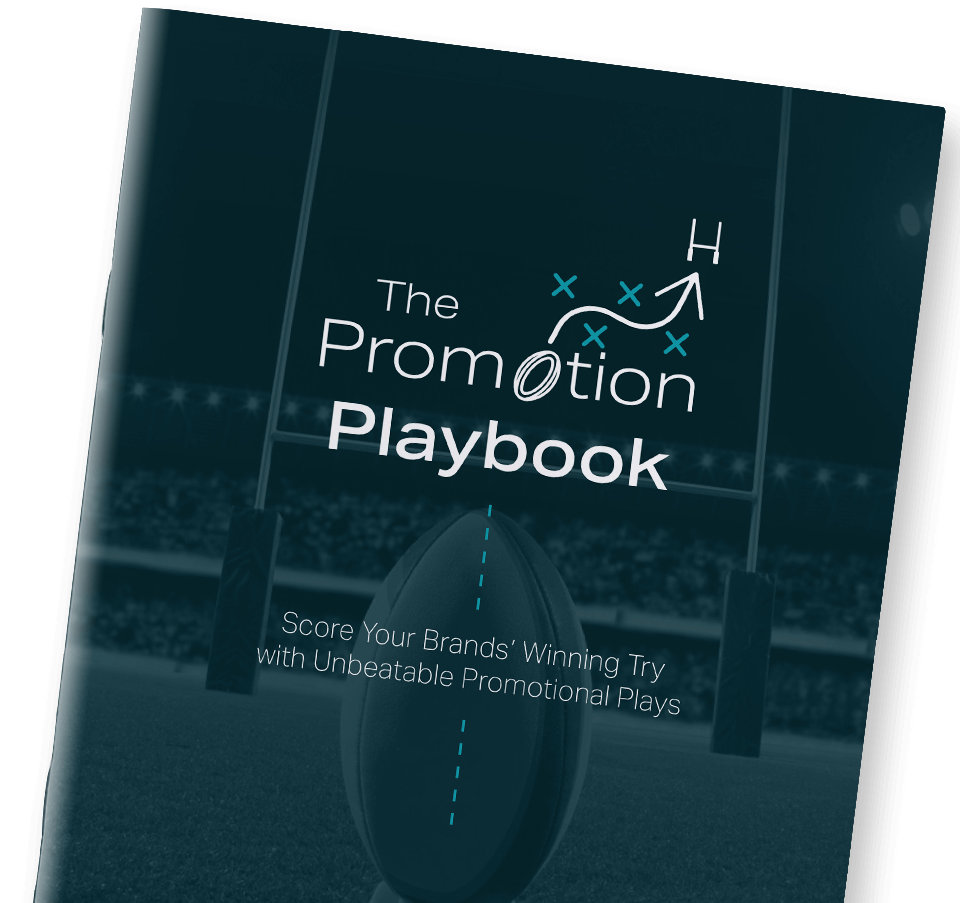Table of Contents
Whether you’re leading the market or aiming to, sustaining that edge is paramount. Defensive marketing is not just corporate jargon but a set of strategies honed to preserve and grow your market share. And while defensive marketing tactics have been a darling of the big-league brands, let’s not kid ourselves—it’s got something for everyone, at every stage of the game.
Philip Kotler, one of the pioneers in marketing theory, outlined six key defensive strategies. Among these, Position Defence stands out as a focal point. It is all about securing your business’s standing in the market, ensuring it remains unchallenged and robust in the face of ever-evolving competitive forces.
Curious about the other five strategies that Kotler highlighted? We won’t cover them here, but you can read more about them at this link.
The Core Assets of Position Defense Defensive Marketing
Before we go on a tactical deep dive, let’s look at the foundational pillars that prop up your defensive stance. Think of these as the bricks and mortar in your strategic fortress. We’ll walk you through two must-haves: Legacy and Brand Equity, and the Goldmine of a Loyal Customer Base.
Brand Equity: Your Unseen Asset
Legacy isn’t just for the old-timers; it’s a treasure chest even for the newcomers. When your brand resonates, you’re not just making noise; you’re building brand equity, a robust vault of value that speaks in more than just dollar signs.
Consider Coca-Cola. Yes, it’s an iconic brand, but what’s truly remarkable is how its brand equity contributes to its total market value. According to Interbrand, a significant portion of Coca-Cola’s market value can be directly attributed to its brand equity. That’s not just an impressive figure; it’s a fortress of competitive advantage. Competitors aren’t merely up against Coca-Cola’s products; they’re facing the significant challenge of its accrued brand power.
Customer Loyalty: Beyond Repeat Business
Brand loyalty doesn’t happen overnight; it’s cultivated over years and often decades. A loyal customer base is one of the strongest defences a brand can have. These customers are not just repeat buyers; they are brand advocates who offer authentic endorsements, effectively serving as a volunteer sales force and a buffer against competitive entry.
This loyalty has multiple layers of value. Firstly, it provides a stable revenue stream, reducing the brand’s vulnerability to market fluctuations. Secondly, loyal customers are more forgiving of minor setbacks, giving the brand room to innovate and take calculated risks. Lastly, a committed customer base can act as a reliable focus group, offering valuable insights for continuous improvement.
Strategic Planning: The Big Picture
Defensive marketing is not just about holding your ground; it’s about forging a stronghold that is impenetrable to competitors. A key element in building this stronghold lies in strategic planning, where you look at the larger landscape to make decisions that will protect your brand in the long term. This section delves into the critical aspects of strategic planning, namely innovation and establishing barriers to entry.
Innovating to Stay Ahead: Why Stagnation is the Real Enemy
For a brand to stay ahead, there must be an ongoing commitment to evolving the product or service offering, sharpening customer engagement methods, and embracing technological advancements. This not only maintains interest among your existing customer base but also ensures you stay ahead of any emerging competitors seeking to chip away at your market share.
Beyond Meat, a relatively small player compared to giants like Tyson Foods, significantly disrupted the food industry with its plant-based meat alternatives. They didn’t just offer another veggie burger; they scientifically engineered plant-based proteins to mimic the taste, texture, and look of real meat. This innovation has not only captured a loyal following but has also forced larger food companies to accelerate their plant-based offerings. Beyond Meat has managed to ‘own’ this innovative space, making them hard to displace.
Barriers to Entry: Making Your Market Unattractive to Newcomers
One of the most effective ways of securing your market position is by making it less attractive or more challenging for new players to enter the market. Barriers can be economic, legal, or even psychological.
- Economic Barriers: These can range from the high costs associated with manufacturing to the expense of customer acquisition. By leveraging economies of scale, established players can often produce goods more cheaply, thereby setting a price point that is hard for newcomers to match without sacrificing profitability.
- Legal and Contractual Barriers: Patents, exclusive distribution agreements, and stringent regulations can deter new entrants who might lack the resources or expertise to navigate these hurdles. For instance, if you hold a patent on a particular technology, the barrier for a competitor to enter that specific market space becomes significantly higher.
- Psychological Barriers: Never underestimate the power of brand loyalty. When consumers are committed to a brand, the cost—in terms of time, money, and effort—of switching to a competitor can often seem too high, acting as a deterrent against market entry.
- Complexity and Learning Curve: In some industries, the sheer complexity of the products or services can act as a barrier. New entrants must invest in gaining expertise, which can be time-consuming and costly, making them think twice before entering the market.
By strategically planning these barriers to entry, you make your market position more secure, dissuading potential competitors from entering the arena.
Tactical Toolkit: Specific Actions for Defending Your Position
Effective defence in marketing isn’t just about high-level strategy; it’s also about the specific tactics that fortify that strategy. This section covers the essential methods that can help secure your market position.
Promotional Methods
Protective Advertising
While traditional advertising focuses on gaining new customers, protective advertising aims to safeguard existing market share. This could involve campaigns that remind customers of your brand’s heritage, quality, and reliability.
Example: Coca-Cola regularly emphasises its historical significance in advertising campaigns to maintain emotional ties with consumers, fortifying its position against newer brands.
Exclusive Deals
To make your customer base stick to your brand, offering exclusive deals can be an effective tactic. These could range from pre-launch offers, ‘customer-only’ discounts to loyalty rewards.
Example: Glossier offers exclusive bundles and early access to new products for its community members, setting itself apart from larger beauty brands.
Customer Engagement
Retention Programs
Customer retention is often more cost-effective than acquisition. Programs such as memberships or loyalty cards can play a key role.
Example: Starbucks’ Rewards program provides free items and special perks, offering incentives that keep customers from straying to independent coffee shops.
Reactive Customer Service
In an era where a single negative review can ripple across social media, reactive customer service—addressing issues before they escalate—is not just desirable but essential.
Example: Domino’s mobile app allows real-time pizza tracking, enabling quick resolution of issues like late delivery, often through discounts or freebies.
Market-Specific Strategies
Geo-Targeting
Not all markets are the same. Geo-targeting allows you to adapt your defensive tactics to local conditions, be it cultural norms or consumer behaviour.
Example: McDonald’s offers a tailored menu in various countries to cater to local tastes.
Defensive Pricing
This could mean maintaining a price match guarantee or even proactively lowering prices in regions where a competitor is attempting to gain market share.
Example: John Lewis’ historic “Never Knowingly Undersold” policy served as a long-standing price matching guarantee until it was retired in 2022. The company now focuses on investing to maintain competitive pricing.
Feedback Loops
Social Listening
This involves monitoring social media channels for mentions of your brand, competitors, or industry trends. This real-time feedback can be invaluable for adapting your strategies.
Example: Fitbit’s “Reminders to Move” feature was developed through social listening, responding to customer feedback for a solution to inactivity. Read more about this and other social listening examples on Jeff Bullas’ blog.
Community Building
By creating a community around your brand, you establish another layer of defence. Loyal community members often become brand advocates, making it harder for competitors to make inroads.
Example: LEGO Ideas allows fans to submit and vote on new set designs. If a concept receives enough community support, LEGO may produce it as an actual set, giving credit to the original designer.
Trust Factors
Satisfaction Guarantees
Offering guarantees adds a safety net for your customers, increasing their trust and likelihood to choose your brand.
Example: Zappos offers a 365-day return policy, making consumers more confident to shop with them than with other online retailers.
Transparency
Being clear about your business practices and pricing models can go a long way in building trust.
Example: Everlane discloses the cost breakdown of each product, creating a level of transparency that challenges larger fashion brands.
Quality Assurance
Third-party certifications or rigorous quality checks offer another layer of reassurance to customers.
Example: Dollar Shave Club has won numerous awards for its razors, directly challenging the long-standing dominance of Gillette.
Warranty Extensions
Extended warranties provide an extra layer of comfort to customers, encouraging them to stay loyal to your brand for longer periods.
Example: AppleCare+ extends the warranty on Apple products, providing peace of mind and making it harder for other tech companies to lure away Apple’s customer base.
Social Proof
Customer testimonials and reviews can serve as powerful tools for establishing credibility and trust.
Example: Airbnb has harnessed the power of user reviews to build trust, becoming a viable alternative to big hotel chains.
Social Responsibility
Showing your brand’s commitment to community or social causes can deepen customer trust.
Example: TOMS Shoes’ ‘One for One’ campaign not only helps those in need but also builds positive brand equity.
Personalised Communication
Individualised interactions, whether through email campaigns or tailored recommendations, make customers feel valued and trusted. 90% of leading marketers say personalisation significantly contributes to business profitability.
Example: Spotify’s algorithmically curated playlists give it a competitive edge against other big names in the music industry.
Why Continuous Evolution is Non-Negotiable
The message is clear: defensive marketing is not a one-time effort; it’s a continuous strategy. We’ve explored the core assets incumbent brands often possess, like brand equity and customer loyalty, and delved into the strategic planning necessary to maintain and defend market position. From establishing barriers to entry to employing a tactical toolkit full of targeted promotions and customer engagement strategies, the need for a robust, multi-layered approach is evident.
But the landscape is ever-changing. New competitors rise with disruptive ideas; technologies advance, changing the playing field; customer desires evolve, requiring you to adapt or become obsolete. This underscores the non-negotiable nature of continuous evolution in your defensive marketing strategies.
Powering Your Cross-Border Promotional Campaigns
We’re not just any marketing firm – we’re promotions experts. We specialise in designing and executing global promotions in any country, so you can reach more loyal customers, sell more products, and grow your business. No matter what you sell, which languages your customers speak, or where they’re located, we can create a promotional campaign that’s tailored to your needs and budget.
Don’t devalue your products with discounts. Promotions such as cashback, gifts with purchase, and trade-ins sell your products just as well – or even better – and at full price.
Our customer satisfaction promotions will help you build trust with your customers. Empower your customers to buy with confidence, knowing their satisfaction is your number one priority.
Loyal customers are the lifeblood of any business. They’re your best customers, buy more often, and drive more sales than your average customer.
Related Articles
STAY UP-TO-DATE
Sign Up For Our Newsletter
Get the latest resources right to your inbox so you can stay ahead of the curve.




